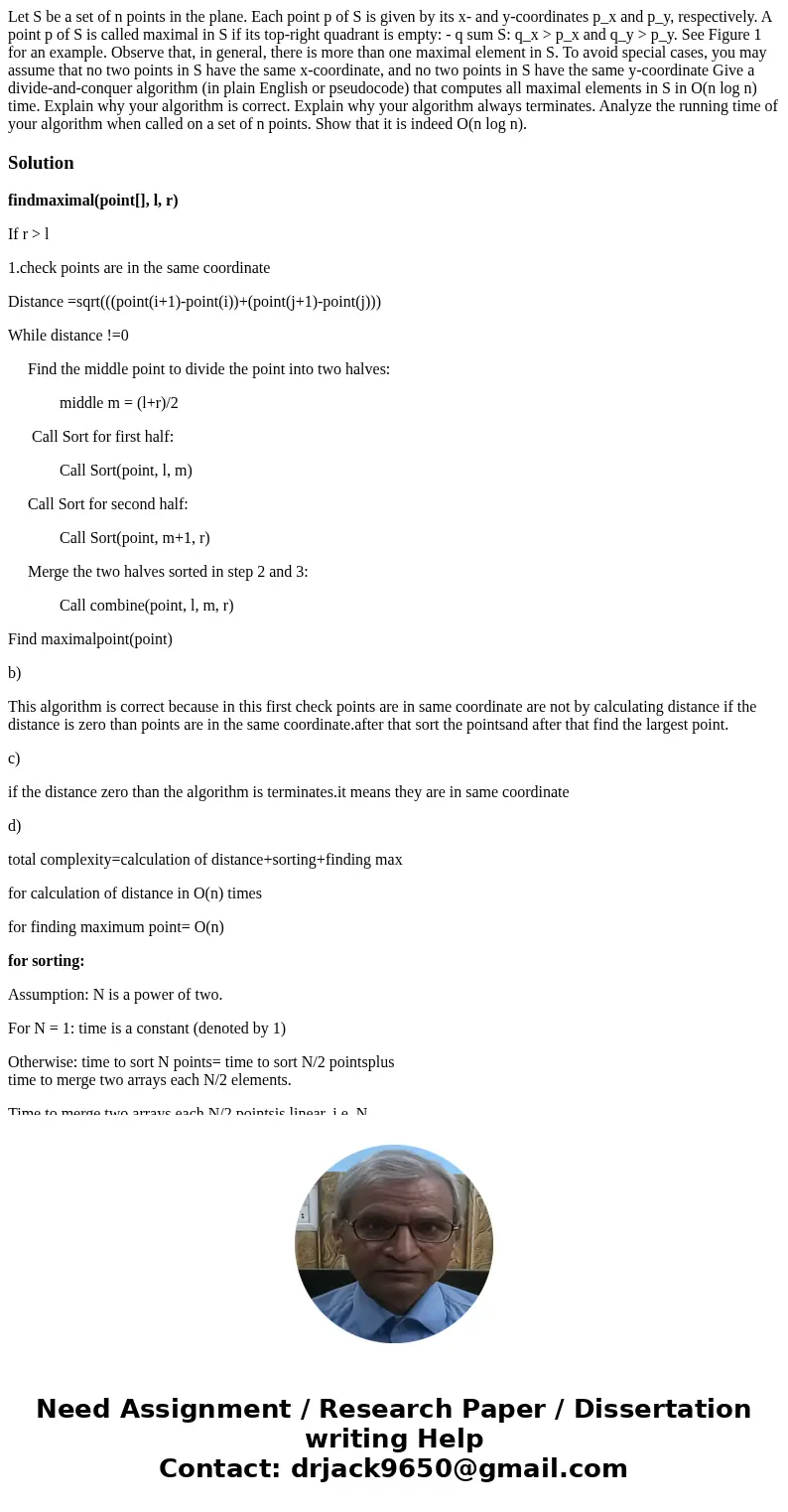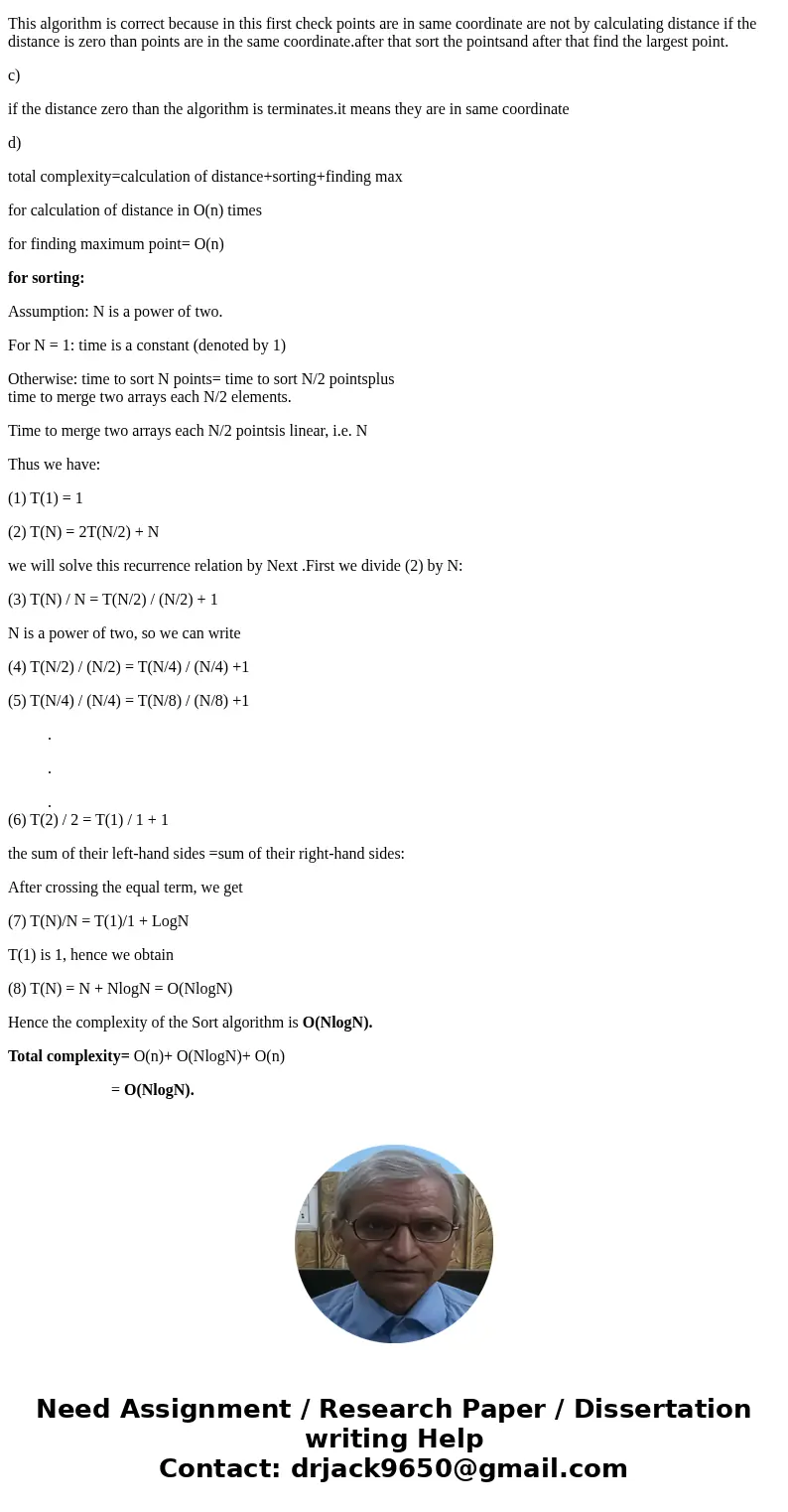Let S be a set of n points in the plane Each point p of S is
Solution
findmaximal(point[], l, r)
If r > l
1.check points are in the same coordinate
Distance =sqrt(((point(i+1)-point(i))+(point(j+1)-point(j)))
While distance !=0
Find the middle point to divide the point into two halves:
middle m = (l+r)/2
Call Sort for first half:
Call Sort(point, l, m)
Call Sort for second half:
Call Sort(point, m+1, r)
Merge the two halves sorted in step 2 and 3:
Call combine(point, l, m, r)
Find maximalpoint(point)
b)
This algorithm is correct because in this first check points are in same coordinate are not by calculating distance if the distance is zero than points are in the same coordinate.after that sort the pointsand after that find the largest point.
c)
if the distance zero than the algorithm is terminates.it means they are in same coordinate
d)
total complexity=calculation of distance+sorting+finding max
for calculation of distance in O(n) times
for finding maximum point= O(n)
for sorting:
Assumption: N is a power of two.
For N = 1: time is a constant (denoted by 1)
Otherwise: time to sort N points= time to sort N/2 pointsplus
time to merge two arrays each N/2 elements.
Time to merge two arrays each N/2 pointsis linear, i.e. N
Thus we have:
(1) T(1) = 1
(2) T(N) = 2T(N/2) + N
we will solve this recurrence relation by Next .First we divide (2) by N:
(3) T(N) / N = T(N/2) / (N/2) + 1
N is a power of two, so we can write
(4) T(N/2) / (N/2) = T(N/4) / (N/4) +1
(5) T(N/4) / (N/4) = T(N/8) / (N/8) +1
.
.
.
(6) T(2) / 2 = T(1) / 1 + 1
the sum of their left-hand sides =sum of their right-hand sides:
After crossing the equal term, we get
(7) T(N)/N = T(1)/1 + LogN
T(1) is 1, hence we obtain
(8) T(N) = N + NlogN = O(NlogN)
Hence the complexity of the Sort algorithm is O(NlogN).
Total complexity= O(n)+ O(NlogN)+ O(n)
= O(NlogN).


 Homework Sourse
Homework Sourse